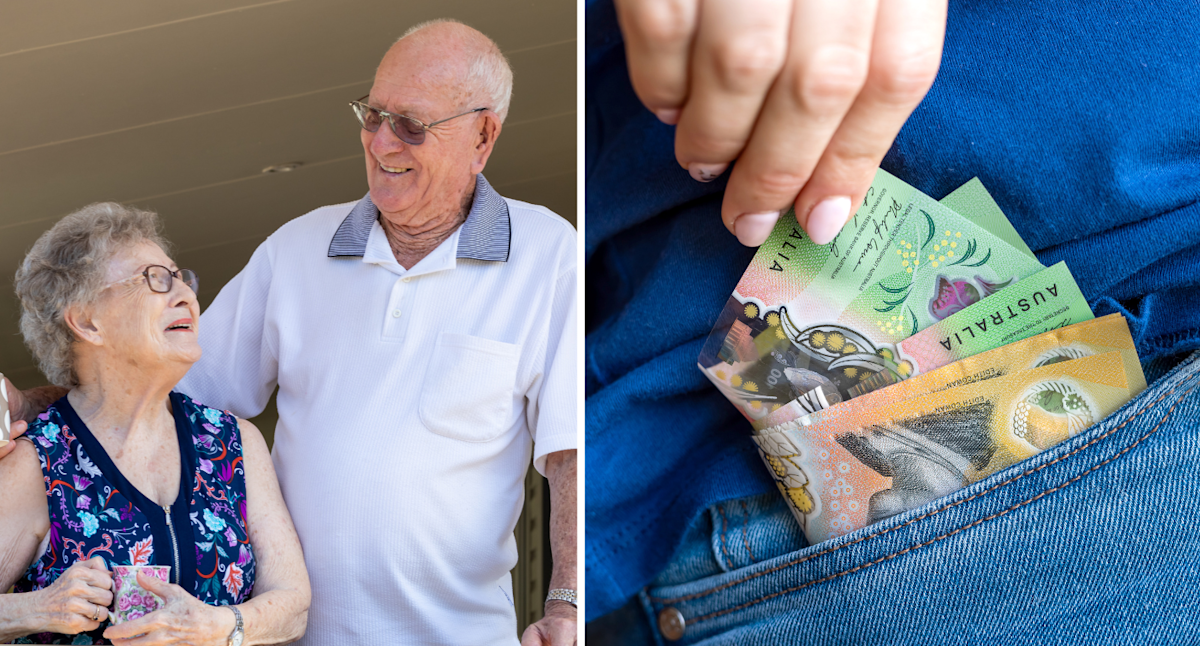Residential aged care costs are set to go up for self-funded retirees entering care from today. (Source: Getty)
Self-funded retirees could soon be forking out tens of thousands of dollars extra per year if they’re entering residential care. From today (November 1), “seismic” changes have come into effect with Australia’s aged care system.
As a result, those who enter residential facilities from now will have more costly expenses than if they entered before October 31. Clarity Aged Care Advisors principal Michael Horin told Yahoo Finance these changes are necessary to ensure providers will be able to cope with the expected increased demand for aged care in the future.
“Aged care facilities are not profitable at the moment,” he said.
RELATED
“It’s not a profitable industry. There’s no reason for a provider to create more beds, because it doesn’t actually make money. They’re not profitable because their revenue is capped by the government.
“They can only charge what they’re allowed to charge, but their overheads continue to rise, as with everything at the moment with cost of living, electricity, wages, etc. So their margins are being squeezed.
“So the government is saying, ‘We’re going to chip in a bit more, but we’re also asking the resident and their family to chip in a bit more as well.'”
According to government data, there are around 233,600 residential aged care beds in Australia.
But by 2043, there will need to be at least 400,000 beds to match demand due to the ageing population.
Do you have a story? Email stew.perrie@yahooinc.com
The changes, touted as “once-in-a-generation” reforms by health minister Mark Butler, were meant to come in at the start of July.
But the government pushed the start date to November to give the industry more time to adjust to the “incredibly ambitious” updates.
For residential aged care, there will be changes to the following for anyone who enters care after November 1:
RADs have previously been fully refunded when a resident leaves care.
However, aged care providers will now retain 2 per cent of the RAD per year for up to five years.
DAPs are non-refundable daily payments that resident pay to cover their accommodation costs.
Story Continues
These payments used to be locked in when residents are admitted to care, but they will now be indexed to inflation twice a year in March and September.
Those entering residential aged care from November 1 will have to pay more to ensure providers can stay afloat. (Source: Getty) · Colin Anderson Productions pty ltd via Getty Images
The hotelling supplement helps providers meet the everyday cost of care services like catering, cleaning and laundry.
This daily cost was previously covered by the government, but it will soon be means-tested and residents might have to contribute towards it based on their financial circumstances. The maximum will be $22.15 per day.
HELF fees will also soon be indexed to CPI but will undergo “regular” reviews based on the residents needs. These are optional and provide extra or higher quality services for residents.
The NCCC will be replacing the current means-tested fee and have a much higher lifetime cap. At the moment, the annual cap is $34,311 and the lifetime limit is $82,347.
Under the changes, the annual cap will be removed and residents could have to pay upwards of $105 per day and the lifetime cap will be $135,318.69. But the government will still continue to fund all clinical care.
New aged care residents who are assessed as having low financial means will not be affected by these changes.
Those in residential care before November 1 will have their arrangements grandfathered and these changes won’t apply to them.
Providers across the country have different costs based on the level of care they offer, what type of facilities they have, what their rooms are like, and how much care a resident needs.
Because some of these additional costs are also means-tested, it’s hard to give an exact dollar figure on what these changes will have on each individual.
But modelling done by Clarity Aged Care Advisors suggested the annual increase in out of pocket expense could be between $20,000 to $50,000.
That number will wholly depend on what a person selects when entering care.
“What facility do you choose? What room do you choose within that facility, and what are your means?” Horin explained to Yahoo Finance.
“It does ‘punish’ those with more means, but it’s designed so that those who can afford it will pay more for their care.
“It’s actually harder than it’s ever been to find a bed,” Horin said. “The occupancy rate around the country is close to 95 per cent.”
Horin agreed that an extra $50,000 per year is not a small number and appreciated it could cause concern for some self-funded retirees.
But he insisted that providers across the country won’t be able to survive if they don’t get the funding from somewhere.
He urged people to start planning for their future with these numbers in mind.
“It always happens quickly,” he said. “It never happens when you want it to and our biggest advice is to get a plan in place early.
“As soon as you see the writing on the wall that this might be happening six to 12 months from now, figure out how you’re going to fund it… have the conversation.”
He added that there’s often a misconception around funding that’s worth debunking.
“One thing we hear is, ‘I don’t want to use my super for this. It’s my savings,'” he said.
“Super was bought in for spending like this.”
He urged people going into residential aged care to not be scared about digging into their retirement nest eggs to get some of those larger costs out of the way.
Get the latest Yahoo Finance news – follow us on Facebook, LinkedIn and Instagram.

